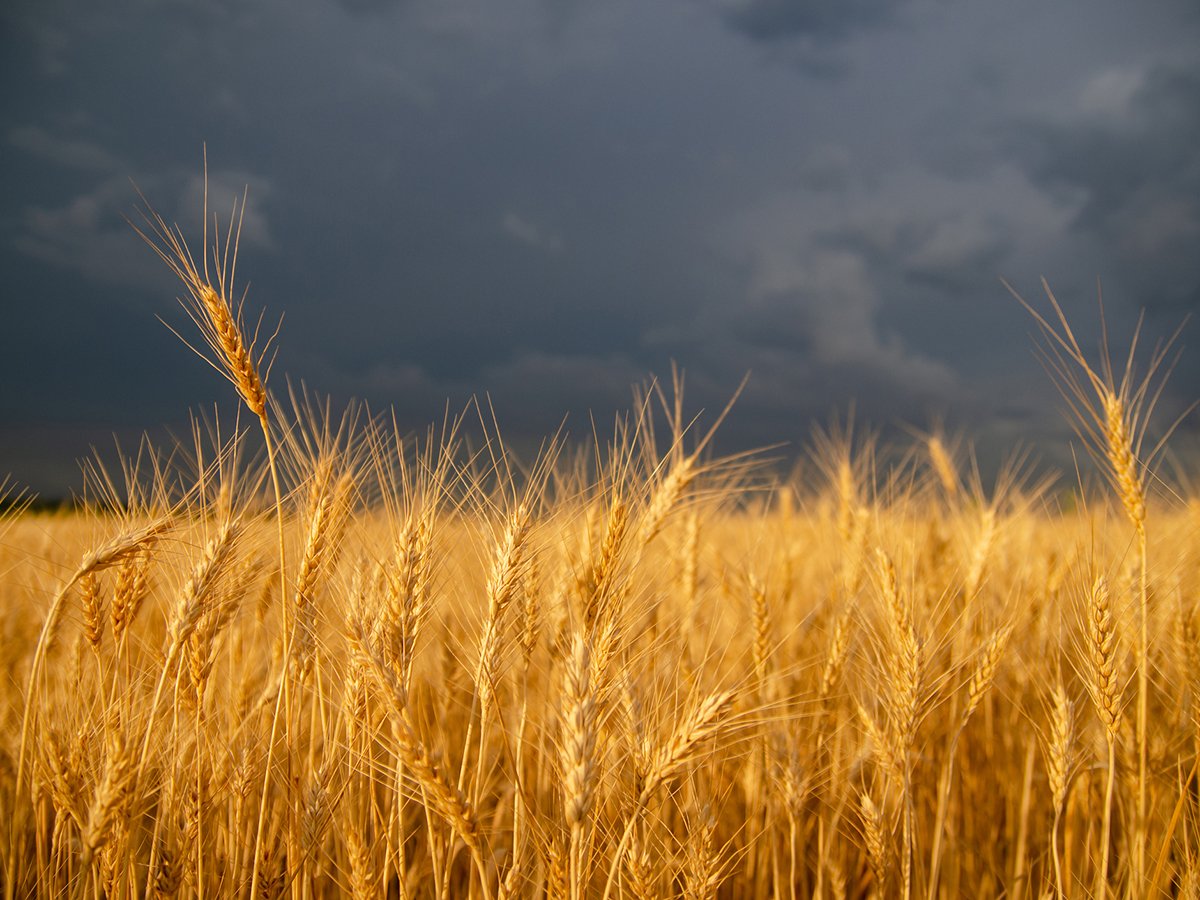Here are some excerpts from a few newsletters I get. They’re all bullish, so I hope they give grain growers some cheery reading for the weekend and a warm, glowy feeling, especially if they have to go outdoors to move grain in these frigid conditions:
BARCLAYS CAPITAL – COMMODITIES WEEKLY
(This weekly report sums up the global bank’s view of various commodity sectors. Ag ranks high this week. Here are the first few lines of the 23-page report:)
“Despite the recent choppy price moves, commodity markets are still characterized by a slew of supportive fundamentals. Agricultural markets remain underpinned by tight supplies and low inventories with continuous downward revisions to production due to poor weather, while food inflation remains a burning issue, especially in emerging markets.”
Read Also

Late season rainfall creates concern about Prairie crop quality
Praying for rain is being replaced with the hope that rain can stop for harvest. Rainfall in July and early August has been much greater than normal.
(So maybe the ag markets have seemed soft this week, but Barclays doesn’t see any underlying reason to worry. Here’s from the ag-dedicated part of the report:)
“We are still bullish on grain price prospects, even at current high levels, as market fundamentals remain supportive due to supply downgrades induced by adverse weather conditions, positive demand and inventories declining as the Northern Hemisphere spring planting season starts and the battle for acreage heats up.”
(About corn prices:) “We have scaled-up our price forecasts to reflect a continued tightness in market balances.”
(Well, that forecast is certainly better than a boot to the groin, I must say.)
DENNIS SMITH – ARCHER FINANCIAL SERVICES
(Dennis is a long time trader – 21 years of it, in fact – and a wise commentator, from what I’ve seen over the past few years. Here’s his take on recent corn weakness:)
“Does The Key Reversal in Corn Prices Indicate a Major Top?”
“The corn market ended 2010 on its contract highs and then staged a correction, as predicted, during early January. Following the correction downward, prices quickly shot back up into fresh contract highs. Then yesterday, January 19, corn staged a massive key reversal. The question which now must be addressed: does the key chart reversal indicate a major top in corn prices?” (My bolding)
“In my opinion, the short one-word answer to this question is NO. It appears that key reversals are no longer a reliable technical tool to use in determining major tops and bottoms. For example, there have been several key reversals in the live cattle market over the past few months. If you would have initiated short positions based on these reversals, thinking a major top was in place, you’d have been run over by the market every time. Key reversals are likely no longer a reliable indicator of tops and bottoms because of the new information age.”
(Smith then explains that reversals probably now take longer to form reversal formations, especially with today’s volatility, so traders need to be more sophisticated than simply seeing a one-day slump and assuming everyone’s figured out the emperor’s got no clothes all at once. So here’s where he sees corn going:)
“Having an understanding of exactly what price level begins to ration supply is difficult. However, with demand projections unchanged from December to January, one can conclude that corn prices in the range of $5.55 to $6.30 did not start the rationing process. Higher prices are necessary. Also keep in mind that slowing demand and rationing supply is a process. It takes time. A spike upward in prices just won’t do the job. Prices need to reach levels that begin to slow consumption and they need to stay at that level. Knowing what price levels these are is simply an educated guess. My estimate is that corn prices need to spend time above $7.00 to begin slowing demand and rationing supply. Yes, despite the recent key reversal, I remain bullish corn prices.”
(Another forecast that’s better than a boot to the midsection)
NEIL TOWNSEND – CANADIAN WHEAT BOARD PPO UPDATER
(I must say I enjoy Townsend’s writing, which isn’t too bafflegabby. And it’s fun. He actually uses metaphors and colorful imagery. In one of his December commentaries he referred to Icarus. That’s a bit more highbrow than I often am, I note, recalling my recent reference to Kim Kardashian. So if you want a readable version of what the present heated market situation means for your PPO positions, go check out the full Updater. But here are a couple of chunks summing up the overall situation:)
“The U.S. “battle for acres” is beginning in earnest. Typically, the heavy-weight contenders are corn and soybeans. Both have started an aggressive armament program but it is still difficult at this stage to predict the ultimate victor. Many U.S. analysts suggest that corn has the edge, but soybeans are not throwing in the proverbial towel. The main takeaway is that the battle is not over. The bitter forthcoming struggle clearly anticipates further price appreciation in new-crop futures positions.”
(About wheat in particular:)
“One assumption that is crumbling fast is that (spring) wheat would meekly depart the battlefield, happy to leave the spoils to the other combatants: corn and soybeans. However, wheat futures values have remained resilient and wheat has a chance to gain back some acres presumed lost in both the northern tier of the U.S. and in Canada (maybe not from canola but it is clearly nipping at the heels of pulses). In the meantime, the old-crop futures contracts will remain driven by the reality and perception of scarcity. Scarcity is a powerful force to futures markets. It is important to note that wheat is far from scarce. The U.S. Department of Agriculture (USDA), in their latest World Agricultural Supply and Demand Estimates report from January 2011, forecast 2010-11 ending stocks at 178 million tonnes. Recall that world ending stocks in 2007-08 were just below 125 million tonnes.”
(Curse him for that little bit of caution at the end there! Hey buddy – I’m trying to write a cheery blog post here. I find it inconvenient that you remind us that wheat isn’t exactly scarce. Nuance, schmuance, I say. So, going into the weekend, I don’t see too much reason to feel glum about crop price prospects in the medium term.)

















